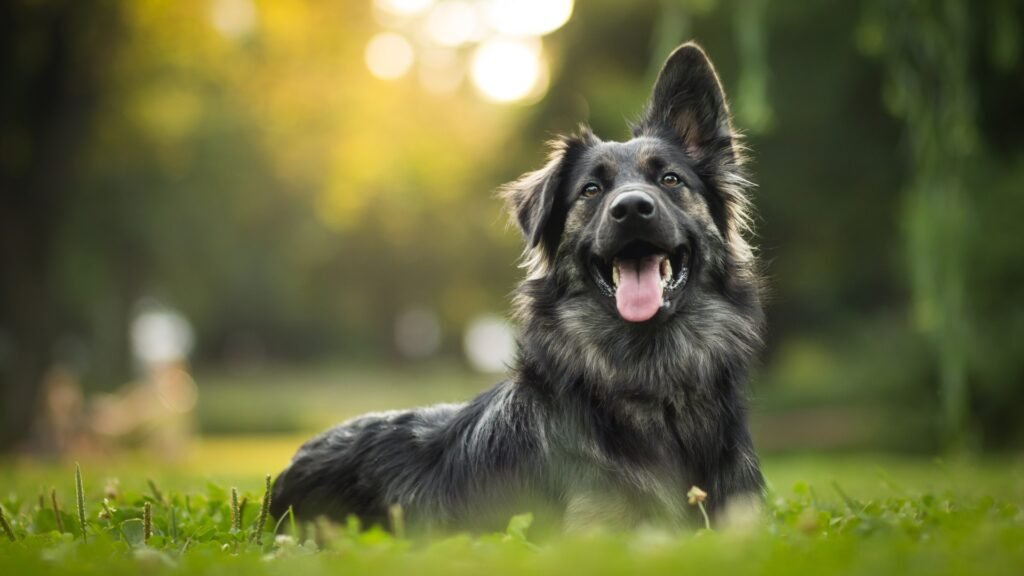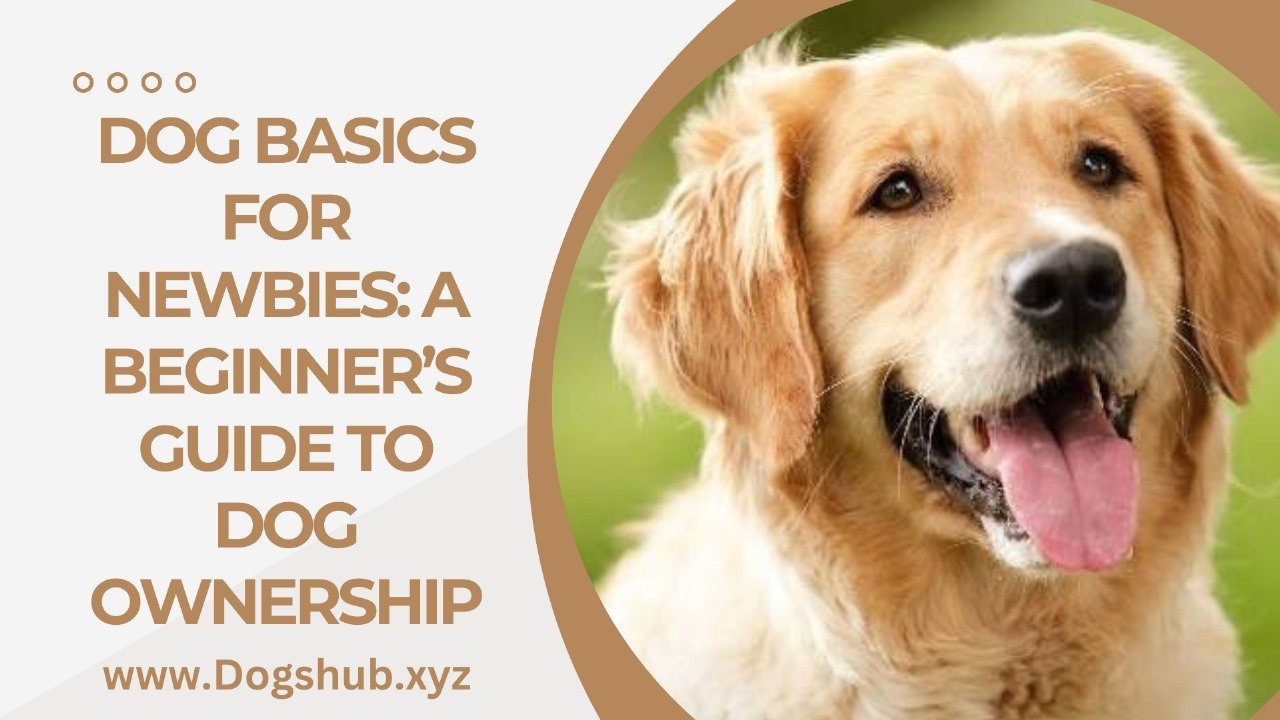Dog Basics for Newbies: A Beginner’s Guide to Dog Ownership. The introduction of a brand new pet to your family can be a thrilling and satisfying adventure. But, it is accompanied by enough responsibilities and issues, particularly for the first dog owner. This article provides important information regarding the basics of dog ownership to benefit to start off with the right foundation. From choosing the perfect dog, to understanding what they need and making sure they are healthy and well-being, this guide will cover all you need to be aware of about the dog’s ownership.
The Right Dog to Choose
Breed Select
Selecting the correct breed is essential in order to assure an ideal fit with the lifestyle you are living in and.
- Energy levels Active breeds such as Border Collies as well as Jack Russell Terriers need lots of exercise as well as mental stimulation. If you live a than sedentary life, you should consider breeds such as Bulldogs and Basset Hounds.
- Size Take into consideration the dimensions of your living area. Larger breeds might require larger spaces to play and smaller breeds may be successful in smaller spaces.
- Grooming needs The breeds with longer hair need regular grooming. shorter-haired breeds are simpler to care for.
- Temperament Study the temperament of breeds in order to identify one that fits your personal style and your family’s dynamic.
Age Aspects
- Puppies puppies require lots of education and interaction, but they can be molded by the way they behave from an early stage of their lives.
- Adult dogs Dogs of adulthood are often already trained and may have a better behavior.
- Senior Canines Senior dogs may relax and require less activity, however they could require a higher level of medical attention.
The Home You’ve Been Preparing

Essential Supplies
- Food and Water Bowls Choose ceramic or stainless steel bowls that are simple to wash.
- Bedding Afford a cozy bedding in a tranquil space where your pet can relax.
- Crate The crate could help with housebreaking as well as offering your dog a safe area.
- Toys Interactive toys keep your pet entertained and engaged.
- Collar and leash Make sure you wear an appropriate collar and leash that you can walk with as well as identification.
Dog-Proofing Your Home
- Safe Risks Secure or remove objects that may be dangerous including electrical cables as well as toxic plants and tiny objects that may be ingested.
- Create a safe space Establish an area in which your dog is able to retreat and be secure, particularly in stressful times such as firework displays or storms.
Basic Socialization and Training
Housebreaking
- Create the following plan You should take your pet out often in the evening, especially after eating as well as after playtime and nap time.
- Utilize Positive Reward Your dog should be rewarded with praise and treats when they pee outside.
- Confront and supervise Supervise and confine your pet inside and confining your pet to a limited space or in a crate if they are unable to be watched.
Basic Commands
- Sit Learn to teach the dog how to sit upon command in order to be more controlled across a variety of scenarios.
- Stay Stay: A trustworthy Stay command will keep your dog secure in dangersome circumstances.
- Come Recall your dog with a strong instruction ensures that your dog comes back to you upon being called.
- “Leave It” Teach your dog to let things in their own space can benefit prevent their ingesting potentially harmful items.
Socialization
- Exposure Introduction of your dog to different environments, people as well as other animals in order to lessen aggression and fear.
- Positive experiences Make sure that your socialization activities are enjoyable and do not overburden your dog for your dog’s comfort.
Food and Feeding
The Right Food to Choose
- Commercial Dog Food Choose top-quality commercial pet food which is in line with AAFCO guidelines for full and balanced nutrition.
- DIY Diets If you are a fan of homemade meals, you should consult an veterinary specialist to warrant that it is in line with all nutrition demands.
- Special diets Certain dogs might require special diets because of allergies, age or other medical issues.
Feeding Scheduling
- Puppies: Feed puppies between 3 and 4 times per day, to assist their fast growth and energy requirements.
- Adult Canines Most adult dogs can be satisfied having two meals daily.
- Senior Canines Dogs who are older could benefit from eating more frequently small meals, which can aid in digestion.
Healthcare
Regular Veterinary Checkups
- Check-Ups Plan annually for vet visits to conduct medical assessments, vaccinations as well as dental treatment.
- Immunizations Maintain your dog current with vaccinations, to guard from common ailments like distemper, rabies and parvovirus.
Preventive Care
- Tick and Tick Prevention: Make use of tick and flea prevention products to guard your dog against parasites.
- Heartworm Prevention: Give a heartworm medication every month.
- Dental Treatment Make sure to brush your dog’s teeth frequently and offer additional chewing toys to benefit prevent dental diseases.
Affirming Signs of Disease
- Behaviour Changes Be aware of behaviors that change including lethargy aggressiveness or overly biting.
- Physical Signs Look out for indicators including diarrhea, vomiting difficult breathing, or coughing.
- Skin and Coat Examine for any signs of irritation to the skin, frequent scratching or loss of hair.
Training and mental Stimulation
Physical Activity
- Daily walks Give your dog daily walks for your dog to stay active and mentally energized.
- Playtime Get involved in fun activities such as fetch, tug-ofwar and agility exercises.
- Dog Parks: Go to dog parks in order for your pet to meet new people and release the energy.
Mind Stimulation
- Puzzle Toys Puzzle toys to test your dog’s brain and avoid boredom.
- Workshops for Training Regular sessions of training could give mental stimulation as well as reinforce positive behavior.
- Scent Games: Put treats out in your home or in the yard, and then encourage your dog to locate them together the sense of scent.
grooming and hygiene
Brushing
- The coat type Your dog should be groomed regularly, according to their coat. The breeds with long hair may require frequent brushing. Short-haired breeds are brushed regularly.
- Shedding Regularly brushing can reduce shed while maintaining an enviable coat.
Bathing
- Time of use Do your dog a bath when needed, generally every 4 to 6 weeks. The excess bathing can strip the natural oils out of their coats.
- Shampoo Choose a specific dog shampoo that’s gentle on the skin.
Nail Trimming
- Regular trimming Your pet’s nails once every couple of weeks to stop overgrowth and irritation.
- Proper Tool Utilize an animal nail clipper or grinder. Be careful not to cut through the fast, as this can lead to bleeding.
The journey With Your Dog
Car Travel
- Safety Use a dog cage or seatbelt harness for your dog to be secure inside the vehicle.
- Comfort Take your pet’s bedding, blanket, or your favorite pet toys to benefit them feel more relaxed.
Air Travel
- Regulations Review airline rules as well as requirements when traveling with pets.
- Health certificate You must obtain a medical certificate from your doctor prior to your trip.
- Comfort Pick a comfortable and airline-approved pet carrier for your pet.
Conclusion
Being a pet owner is an enjoyable experience, but it takes dedication, patience and a lot of love. If you know the fundamentals of caring for your dog it is possible to warrant that your dog is healthy and happy. Keep in mind that every pet is different, which is why it’s essential to adapt and be responsive to the needs of each dog. Take pleasure in the process of owning a dog and treasure each moment spent with your brand new pet.




